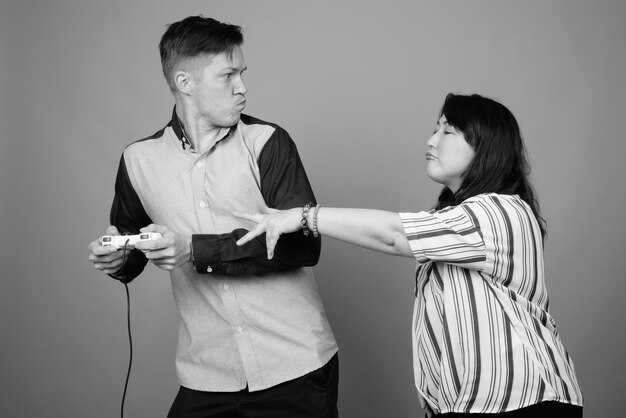What ultimately undoes an anxious–avoidant pair is rarely a deficit of affection. Both people would probably insist they care deeply for one another. The real problem is a recurring, self-perpetuating pattern they cannot escape: one partner seeks security through closeness, while the other clings to distance. As a result, one reaches for connection and the other recoils. One intensifies to get reassurance and meet emotional needs, while the other freezes or withdraws when feeling pressured. Each partner’s default strategy for feeling safe activates the other’s most vulnerable fear, trapping both in a loop where neither feels secure. The way out requires intentional change — but first, a quick reminder of the core fears at play. The anxious partner’s greatest dread is abandonment: a loss of connection. The avoidant partner’s deepest fear is being controlled, rejected, or stripped of autonomy. When the anxious person detects any hint of separation — whether real or imagined — they pursue, seeking certainty and closeness because uncertainty is unbearable. When that pursuit is expressed with anxious, accusatory, or desperate energy, it often reads as clingy, critical, or suffocating to the avoidant partner, who then pulls away. That withdrawal intensifies the anxious partner’s sense of being abandoned, which fuels more pursuit. The result is a tightening spiral, not a lack of love. If the relationship is to survive, both partners must stop activating each other’s wounds. At their core, both are trying to stay safe, but they do it in opposite ways that erode trust. Rebuilding trust is essential, and often there are hidden fears that must be brought into the open. Likely at least one partner does not feel safe enough to be vulnerable — that needs to change. Ask your partner: do you feel safe being honest with me? Can you show up as your whole self, imperfections included? Do you feel comfortable naming hurts or concerns, or do you protect yourself from how I might react? Each answer reveals whether real trust exists between you, because trust is the foundation of a lasting relationship. Every interaction, habit, conversation, and especially every conflict either constructs trust or wears it away. Avoidant, hyper-independent partners: if this relationship matters, you must want it to change. It’s not enough to believe the status quo suits you while simply tolerating the other person’s pain. If your partner is unhappy, the relationship cannot be sustained indefinitely — even if it seems fine for you. This is not about taking responsibility for their happiness, but about making a choice: either effort is invested to make the relationship mutually rewarding, or the relationship ends. The question for both of you is: how can we create conditions where this partnership works for us both? It’s inconsistent to say a great relationship is desired while being unwilling or unable to accept your partner’s candid, heartfelt honesty. Vulnerability does not equal permission to be rude, but without openness, intimacy and trust will quietly vanish. In most couples, one person raises most of the complaints and concerns. Relationship experts John and Julie Gottman recommend maintaining about a 20:1 ratio of positive to negative interactions; otherwise, the partnership is at risk. That ratio means plentiful appreciations, compliments, praise, hugs, affection, thoughtfulness — all those positive deposits. That does not mean never airing a grievance, but it does mean a relationship cannot survive on a preponderance of negative interactions. Anxious partners often think they are unfairly targeted for criticism after asking for only minimal reassurance. The critical question to confront is: if things are truly so bad, why remain? Many stay because a belief persists that things could improve. Frustration, anger, resentment, and bitterness are common states in this cycle, and they are understandable. If the relationship is to persist, it must become a shared project: the distant partner needs to make efforts to fill their partner’s emotional tank and be less emotionally removed; the anxious partner needs to learn healthier ways to manage anger, frustration, and resentment and to practice forgiveness rather than nursing grudges. Self-sacrifice often morphs into self-righteousness that blocks change; neither side should assume they have nothing to change. For the more distant partner, healing requires learning to hold space for the pain inadvertently caused. That is non-negotiable. The anxious partner will continue to practice expressing hurt vulnerably and selectively; the avoidant partner must validate that pain, become curious instead of defensive, ask constructive questions, and listen rather than taking criticism as a personal assault. That shift is the first step toward a new cycle: creating safety and rebuilding trust so difficult conversations can happen with the confidence that both parties have each other’s back. Right now, neither partner typically believes that vulnerabilities won’t be weaponized. That must change. This is not about placing blame or taking sides; the goal is a thriving relationship, and both people must choose whether to do the work required. Both sides carry wounds: avoidant partners may seem better at compartmentalizing and suppressing feelings, but that does not mean they aren’t hurting. They often feel blamed, criticized, or demonized and fear being labeled the problem no matter what they do. The solution is to learn to be a safe place for one another, to validate and seek to understand each other’s pain. How is that done? Break the cycle by doing three things. First, move the unconscious patterns into awareness. Many couples get pulled into the conflict dance before they even realize they’re on the floor. Learn the cycle so well that reactions give way to reflection. Once reflective, behavior becomes intelligible in light of past experience: there are reasons for fear of commitment, frantic texts, feeling smothered by expectations, and terror of vulnerability. At the root lie shame and fear: a suspicion that pain lurks close to love, uncertainty about deserving kindness, and a lack of a healthy model for consistent love. Both anxious and avoidant partners are driven by the same underlying worry — rejection — and both subconsciously ask, “What can I do to avoid being rejected?” One strategy is people-pleasing: prioritizing others’ feelings, walking on eggshells, accepting crumbs, staying silent to preserve peace, avoiding boundaries — all attempts to remain liked. For a time this may work, but it often leads to loneliness and resentment because emotionally unavailable partners don’t reciprocate. The anxious person may accept being labeled “too needy,” abandoning their own needs to avoid abandonment. The opposite strategy is preemptive rejection and numbing: pushing others away before they can be hurt, cultivating hyper-independence, and shutting down emotional closeness. That may protect temporarily, but it also leads to repeated complaints from partners about lack of presence, thoughtfulness, and emotional availability. Shame keeps avoidant people from risking new ways of being because vulnerability feels like failure. Neither strategy is morally superior; both are protective but ultimately self-sabotaging, and both typically trace back to childhood lessons about whether feelings were safe, whether dependence was allowed, and whether others could be trusted. Childhood teaches patterns — not as an excuse for toxicity, but as context for why certain defenses developed. Understanding that history helps decode present reactions and opens the door to change. Relationships can function as mirrors, reflecting unhealed parts of ourselves. Sometimes the irritation, insecurity, or defensiveness felt in response to a partner is less about their action and more about old wounds resurfacing. Viewing conflict as an opportunity for personal growth converts painful moments into chances for deeper connection. Anxious partners often focus intently on why the other behaves hurtfully, sometimes researching their partner’s attachment style extensively. That curiosity can be useful, but at a certain point it becomes less important why the partner is unavailable than why the anxious person believes it’s their responsibility to change or save them. Instead of endlessly diagnosing the other, ask, “If nothing changes, will I still be satisfied here?” The hope of what could be sometimes traps people in relationships that aren’t ultimately life-giving. Leaving feels terrifying because it mirrors the abandonment feared, and many avoid causing the pain they themselves know so well. But staying in order to prevent temporary hurt can keep someone from the relationship they would truly thrive in. Sometimes the truth is simply that the person isn’t a bad human — they’re just not the right match. If honest, respectful vulnerability would break the relationship apart, then that relationship was held together by silence and self-abandonment rather than genuine mutual care. To interrupt the pattern, anxious partners can begin by dropping the mask and naming needs and desires honestly. If those have been neglected for years, this is the prompt to discover them. Showing up authentically may push someone away, but that is a necessary risk; being afraid of the end of an unhealthy relationship keeps people stuck. Ideally, a partner willing to work with you will meet that risk with effort. That brings us to the second step. After understanding fears and shame, take responsibility for one’s contributions to the dance. What is each person’s go-to move? Does one suppress and then snap? Lead with passive-aggression? Use a harsh tone? Dismiss and invalidate because of feeling blamed? Get overwhelmed and shut down during conflict? Acknowledging patterns is essential. People-pleasers and anxious attachers often withhold concerns at low intensity (a 3 or 4 out of 10), only bringing them up once they reach a 9 or 10 — because they don’t believe the partner will listen earlier. The healthier choice is to bring issues forward at a lower intensity with vulnerability and respect. In turn, the partner receiving those early disclosures must take them seriously rather than waiting for escalation. Mutual accountability might sound like: “I can see I came off critical. I’d been annoyed about this for a while, and then I snapped, which probably made you feel attacked and defensive.” The other might reply, “Thank you for saying that. I did get defensive — I wasn’t safe bringing it up earlier, so I buried it. But I also should have been more open.” A genuine repair looks like owning one’s part without shifting everything back onto the partner. Avoidants cannot hide behind “I don’t know” indefinitely. It’s fine to begin there, but the process must end in “I will find out” or “I will work on that.” Conflict often exposes hidden material: a partner’s shortness after work (“Did you feed the dog?”) can be misheard through a shame-tinted lens as criticism and trigger defensive responses, when in reality it may have nothing to do with the other person. Healing calls for slowing down in those moments: ask what was actually said, notice defensive impulses, and inquire rather than assume. Whenever defensiveness, criticism, or shutdown appears, both partners should get curious: “What did you hear me say?” or “I’m feeling defensive — it may not have been your intent, but that’s how I’m reacting.” Such statements are examples of vulnerability — naming what’s happening internally rather than blaming. The other person can then respond with curiosity: “I didn’t mean to hurt you; what happened?” rather than, “That’s not what I meant.” This is not blame avoidance but an exercise in consideration: granting the benefit of the doubt, owning one’s part, and moving toward the other. When both partners practice these skills, a small shift becomes possible: a short or critical tone prompts, “Hey, what’s going on?” with a readiness to hear pain beneath the brusqueness. And when someone goes quiet or withdraws, the other can say, “Your energy shifted — are you feeling blamed? I don’t want you to feel that.” This does not mean doing the other’s healing for them; it means being thoughtful and compassionate. Ask, “What’s the best way for me to remind you we’re on the same team when you’re upset?” and then use that strategy. Anxious partners should take responsibility for their emotional language instead of casting blame. It’s easier to say, “You never take me out anymore,” than to say, “I feel scared you don’t value this relationship as much as I do,” but the latter is more vulnerable and more likely to be received. Avoidant partners must reckon with a hard truth: some will still become defensive or shut down even if the other shares perfectly. That’s often because no one modeled holding space for their big feelings, so the skill must be learned. They need to accept how painful their withdrawal has been for their partner and commit to becoming a safer presence. Deflecting with “I must be the worst partner” only returns the focus to oneself and kills connection. Many avoidant people carry beliefs of unworthiness or of inevitable abandonment, but most partners really do want to know the real person behind the walls. Love requires risk — being all-in without surrendering autonomy. Walls protect but also prevent intimacy. It’s normal to be afraid of getting hurt; still, those who want real connection must build tolerance for vulnerability bit by bit. That leads to the third step. Once hidden fears and automatic responses are visible and both partners understand their respective roles in the dance, the pair can commit to doing things differently. Agree on a new standard and vision together, and validate the pain caused in the past. Understanding and changing behavior are powerful, but they don’t automatically heal old wounds. So, begin with empathy and invitation: ask your partner to describe how past reactions have hurt them, then listen without interrupting. Presence matters: maintain appropriate eye contact, mirror facial expressions, hold hands or offer a comforting touch if desired, and demonstrate emotional engagement. This is not theatre — it’s learning to empathize. Ask thoughtful questions and remain curious: “Thank you for sharing this; I know it’s hard. I can see how you’d feel that way. What could I do differently next time to help you feel safer and more valued?” Keep the conversation vulnerable and respectful. It’s normal for suppressed resentment to surface, but staying regulated is critical. Regulation doesn’t mean suppressing emotion; it means preventing the fear-driven parts of the brain from hijacking the interaction so the couple can remain present and collaborative. Signs of dysregulation include a rising heart rate, talking over each other, escalation, feeling unheard, and a surge of heat or anger. When that happens, both partners should recognize the need for a pause and agree on a temporary break using team-oriented language: “I think we both need a breather,” rather than “You need to calm down.” That phrasing keeps the team mentality intact. Remember that partners who tend to feel blamed during conflict need extra care, and the other partner should be cautious with words, remain vulnerable, and ask what would have helped. Reward honesty: if someone takes the risk to be clear and vulnerable, that must be honored with presence and validation. These skills are not innate for most people; they require practice. Anxious partners often find it easier to verbalize and externally process, while avoidant partners may find such talks overwhelming. The trick is to have these conversations when calm — discuss how to handle conflict before the fight begins, with mutual agreement that both are on the same team. When a partner says, “We could both use a breather,” trust that they are trying to prevent escalation and honor the pause. A nervous system can shift into fight/flight/freeze/fawn rapidly, which is why teammates must support one another rather than shame or belittle. Good teammates communicate expectations and needs clearly while remaining respectful. Ask: does this behavior serve the relationship? Fighting without repair or resolution and arguing without mutual respect only destroy the relationship. If you aren’t sure which actions build trust and which destroy it, have that conversation: what builds trust for you, and what breaks it? Couples who thrive seek and share that information. For the anxious partner, consistent reassurance matters: text, call, leave a note, do those small things reminiscent of courtship. Learn the partner’s love languages and offer actions that make them feel prioritized, as long as those gestures respect reasonable boundaries. Check in regularly and practice emotionally focused conversations: share inner experiences, ask about feelings, listen, and validate. For avoidant partners, the path forward involves practicing thoughtfulness and emotional engagement even when it’s uncomfortable. Be willing to open up and show the inner world, because intimacy requires sharing needs, hopes, and fears. That may feel overwhelming, but small, consistent steps build tolerance for connection. If an avoidant partner sees their anxious partner trying, they should acknowledge the effort; anxious partners should notice and appreciate attempts to be present. Drop the victim narrative: if the relationship is unsafe, leave it. But if both choose to work on the relationship, both must own their part of the conflict rather than listing the other’s failures while refusing to change. Move away from self-righteousness and toward gentle vulnerability. Anxious attachers need to reduce clinginess while still desiring closeness. Part of growing is discovering whether core safety is anchored solely in the partner or also within oneself. People become more attractive when they bring self-worth and independence to a relationship, not when they cling from a place of fear. True healing arrived when many stopped pleading for attention and instead allowed partners to reveal who they were and then chose whether that fit. Balance independence and interdependence: hyper-independent partners must relearn emotional connection, while anxious partners must build tolerance for distance and find safety inside themselves. That doesn’t mean abandoning standards or giving endless latitude; it means locating core security within so relationships add joy rather than being the sole source of safety. The practical bottom line: stop repeating what clearly isn’t working. If this plan doesn’t appeal, find a different constructive plan — but do not revert to old patterns. Be determined to break the loop, heal past wounds, and reassure each other that imperfection will not end love. Show through consistent action that both are committed to making the partnership work: slow down fights, be vulnerable, trace frustrations back to unmet needs, and remind each other you are on the same team. With that shared commitment, healthier patterns can replace the destructive dance, and trust and intimacy can be rebuilt.














